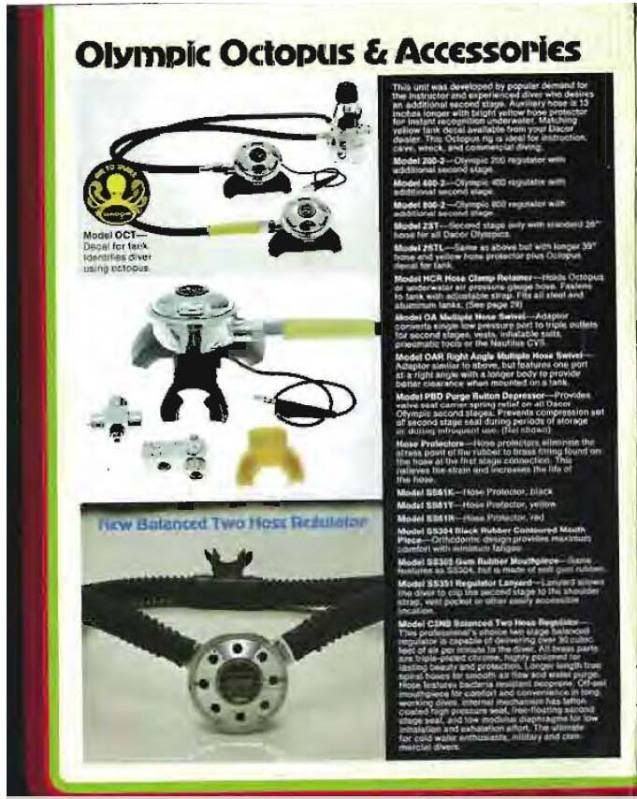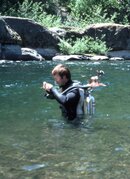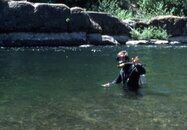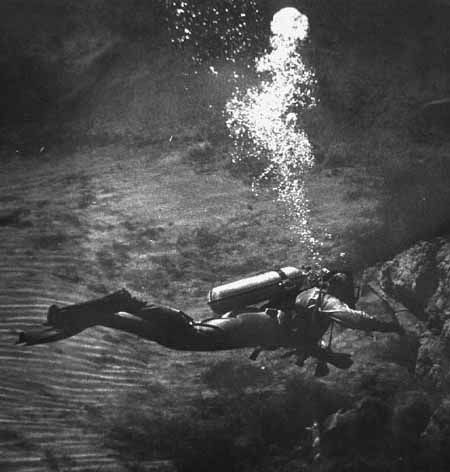Using the insights gained from repeated detailed readings of these ascent accidents, the best available recommendations for diver ascent procedures are (in order of preference):
1. Make a normal ascent after stopping activity, breathing easily and getting control of the situation.
2. Make a shared air ascent, using the buddy diver's extra regulator, if the buddy is so equipped and is closer than the surface, or if there is an obstruction to the surface (ice, cave, wreck, heavy kelp, etc.)
3. Make an emergency swimming ascent in a manner as near to a normal ascent as possible: looking up, regulator in mouth, swimming a bit faster, exhaling more and inhaling less (lungs at near normal volume).
4. Make a buoyant ascent by ditching weights and/or inflating the buoyancy system; with the regulator in mouth, looking up, and exhaling more rapidly.
5. Make a buddy breathing ascent only when the other options are not available.
In a comparison of ascent difficulties with general accidents and training accidents, ascents moved from sixth place to second place; from 10 percent to 20 percent of the causes. But also note that general diving accidents were involved 78 times while training accidents only 24 times. Ascents are definitely of serious concern during diver training, but the simplistic answer of not providing ascent training would simply move some accidents from training situation to general diving situations and most likely cost even more lives. The changing pressure during scuba diving is a unique and possibly risky aspect that does need more careful attention.
In order to more effectively and safely teach ascents, during diver training, some recommendations are possible from reviewing these accident reports. Instructors should:
1. Provide lecture coverage on all forms of ascents used by sport divers.
2. Provide pool or shallow confined water training in normal, octopus, emergency swimming, buoyant, and buddy breathing ascents. Several of these procedures can be practiced horizontally.
3. Provide open water training in normal, octopus, emergency swimming ascents and buddy breathing in a stationary position.
4. Provide complete training in lecture, pool and open water on buoyancy control during ascents, descents, at the surface, at the bottom and in midwater.
5. Make all open water emergency swimming ascents as similar to a normal ascent as possible, i.e. regulator in the mouth, looking up, going slowly, lung volume as near normal as possible.
6. Have divers look up as much as possible wile mking all ascents.
7. Make careful use of medical history forms with medical exams and chest x-rays when needed, plus take special care with any student who has recently had a cold, or is a heavy smoker.
8. Provide close supervision during all ascent training.
Instructors during open water ascent training should:
1. Not have students make any ascent that cannot be stopped or that is done at a high rate of speed, such as a buoyant ascent.
2. Not have students make "free ascents" or do "blow and go".
3. Not have students' air turned off.
4. Not have students buddy breathe vertically.
6. Not have students take the regulator out of their mouth during ascents.
7. Not have students make anything but normal ascents from depths greater than 40 feet.
8. Not put students under undue pass/fail stress during ascents.
These are the best recommendations available after repeated review of the available accident reports. Far more research needs to be done on ascents. The problems and the solutions are not simple or obvious. All of these recommendations came from specific fatal cases where the lack or use of a particular procedure definitely appeared to contribute to the accident.
Hardy, Jon, "Diving Accidents--Why?", Proceedings of the Ninth Internatinal Conference on Underwater Education, Sponsored by The National Association of Underwater Instructors, September 29-October 2, 1977, Lou Fead, Editor, 1977, pages 106-108




 Duckbill, my apologies. But I'm trying to loose some weight to fit into an old Harvey's wet suit I've had since the 1980s, and I was pretty hungry. When the wife calls up, "Supper's done!!!" while I'm in mid-keystroke, I kinda drop everything and head toward food. I'm down four pounds so far this month though.
Duckbill, my apologies. But I'm trying to loose some weight to fit into an old Harvey's wet suit I've had since the 1980s, and I was pretty hungry. When the wife calls up, "Supper's done!!!" while I'm in mid-keystroke, I kinda drop everything and head toward food. I'm down four pounds so far this month though.


